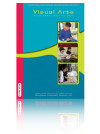Visual Arts is that part of the curriculum which offers opportunities for developing abilities of personal and social expression through a range of media, forms and techniques. Education in the visual arts is also concerned with developing an appreciation and understanding of the art of others, the ways artworks are looked at, thought about, used and valued. A framework for visual arts education and its assessment is presented in Chapter 2. This framework lists important approaches, skills and attitudes appropriate to the two main content strands of making art and responding to art.
New Zealand’s National Education Monitoring Project commenced in 1993, with the task of assessing and reporting on the achievement of New Zealand primary school children in all areas of the school curriculum. Children are assessed at two class levels: year 4 (halfway through primary education) and year 8 (at the end of primary education). Different curriculum areas and skills are assessed each year, over a four-year cycle. The main goal of national monitoring is to provide detailed information about what children know, think and can do, so that patterns of performance can be recognised, successes celebrated, and desirable changes to educational practices and resources identified and implemented.
Each year, random samples of children are selected nationally, then assessed in their own schools by teachers specially seconded and trained for this work. Task instructions are given orally by teachers, through video presentations, on laptop computers, or in writing. Many of the assessment tasks involve the children in the use of equipment and materials. Their responses are presented orally, by demonstration, in writing, in computer files, or through other physical products. Many of the responses are recorded on videotape for subsequent analysis.
Key Results
The visual arts is one of the most popular subject areas in the New Zealand curriculum, but performance levels on tasks do not always match student enthusiasm. Tasks involving art-making produced fairly consistently low scores at year 4, with very few scores seen in the “very good” to “excellent” range on overall ratings, but there was a substantial increase in performance from year 4 to year 8. The skills in using the medium involved in the task (e.g. working with clay) and capturing finer detail tended to receive the lowest scores, whereas expressiveness and composition received higher scores. In comparing performance on art-making tasks to the 2003 administration, there is little change in the scores at year 4, and a small net improvement at year 8.
Tasks requiring a response and explanation of art presented a somewhat more complicated picture. Students fared well on tasks that called for personal reactions and opinions, with year 4 students often doing nearly as well as year 8 students. However, on tasks calling for analysis and explanation of works of art, year 4 students struggled, but solid growth was seen from year 4 to year 8. In comparing art-responding tasks to the 2003 administration, very slight gains are seen at both year 4 and year 8.
Performance in both art-making and responding to art showed strong differences by ethnic group and by socio-economic status. Pakeha students scored somewhat more highly than Māori students at both year 4 and year 8, with art-responding tasks generally showing a bigger difference than art-making tasks. The difference between Pakeha students and Pasifika students was substantial (favouring Pakeha students), especially at year 4, and especially on art-responding tasks.
Students were surveyed as part of the monitoring, and their responses to the survey provide an interesting contrast to their performance on the tasks. Year 4 students love the visual arts, do “heaps” of it at school, and would like to do more. They believe that they are quite good at art and want to learn more as they grow up. They report that they are doing more art and more different kinds of art than did comparable samples in the 2003 or 1999 assessments. Year 8 students are slightly less enthusiastic, but still quite positive about art. Pasifika students, who have the lowest levels of performance on the tasks, are the most positive about art. Thus, there is a bit of a “disconnect” between students liking the subject area and their performance

